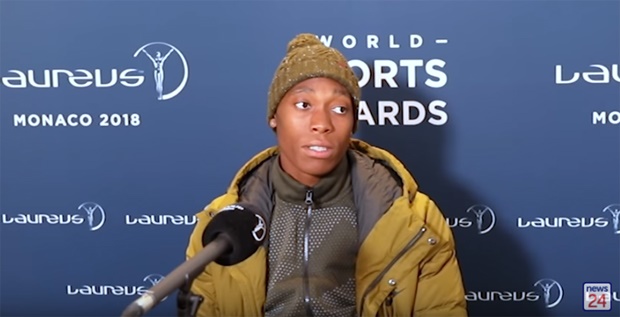Recent news has reported on the attendance of top South African Olympic athlete Caster Semenya, nominated for Sportswoman of the Year, at the awards ceremony in Monaco. Her relaxed appearance with her partner, Violet Raseboya, demonstrates her courage and determination, overcoming the demeaning treatment she endured after being forced to submit to sex-verification tests in 2009 to determine whether she was legitimately female and could continue to participate in female athletics events. In 2010 she was cleared to return, and in 2015 the Court of Arbitration for Sport declared an end to testosterone regulation for female athletes.
Crass haggling over a person’s gender reflects a fairly recent obsession with attempting to classify, to force individuals into categories, based on whether they conform to fashions of masculinity or femininity; whom they love; and what they do, or not, in bed.
When David Bowie died in 2016, I commented on how, taking advantage of his androgynous looks by wearing dresses and make-up, he pushed the confines of fashion as well as stimulating discussion on blurring gender boundaries.
Conchita Wurst, the alter ego of young Austrian man Tom Neuwirth, winner of the 2014 Eurovision Song Contest, wowed with her resplendent gown, long glossy hair and beard.
Jamaican singer Grace Jones cultivated her tall, statuesque demeanour, claiming her masculine side “is a bit stronger”, reminiscent of the imposing, robust figure of Semenya.
Ellen DeGeneres; actor James Franco; Pieter-Dirk Uys, a gay man with a female alter ego, Evita Bezuidenhout; and many other “cross-dressers” such as French novelist George Sand, challenge sexual identity and self-expression.
“Gender non-conforming” refers to a person whose behaviour, especially dressing, does not correspond with social and cultural norms.
Virginia Woolf’s Orlando (1928), inspired by her relationship with Vita Sackville-West and her androgynous dressing and sexuality, relates the story of Orlando, moving through 300 years, from one age and culture to another, morphing from male to female and back.
Woolf explores how a change of sex forces a re-examination of identity, questioning whether identity depends mainly on the perception of male or female personas, manipulated largely by clothing, in evoking the response of others. Yet, regardless of sexual fashion indicators, does one remain the same essential personality? We all, to a greater or lesser degree, conform to the expectations of society, which tends to determine our identity and others’ perceptions.
So, can we claim just three basic sexual orientations: heterosexuality, homosexuality, bi-sexuality? What about talk of LGBTI rights? Who are the others in this acronym? Lesbian, gay, bisexual, transgender, intersex. Why do some lesbians wish to be separately distinguished from gays? Who are the queers, reclaiming a previously derogatory term? This indicates a far more complicated range of sexualities than generally imagined.
Becoming Nicole: The Transformation of an American Family, by Amy Ellis Nutt (2015), records the account of identical twin boys, Wyatt and Jonas Maines. At two years old Wyatt asked when he would become a girl, and only wanted to wear girls clothes. Through years of anguish – for her family, school mates and significant others – she convincingly argued her genuine need to be recognised as female – becoming Nicole. After graduating from high school, she underwent sex-reassignment surgery and, with Jonas, went to the University of Maine. A happy trans-girl, she is an activist helping others who share her experience, maintaining that differences in biological sex are not necessarily hard-wired – there may not be synchronicity between one’s genitals and gender identity.
Scientists naturally wish to explore possible reasons for these not-so-unusual differences. Is it too much or too little testosterone, or the unusual action of male hormones on the brain early in foetal development? But, ultimately, does it matter? Is it imperative, or helpful, to assign some medical label to anyone who doesn’t quite conform to the average gender identifiers? Too often, as it did temporarily for Caster, this dehumanises and brings heartbreak – encouraging misunderstanding and prejudice.
Acknowledging the existentialist view that each individual should assume responsibility for who they are and who they wish to become, that we are not merely the victims of circumstance, each individual must have the freedom to choose how to dress and live out their self-defined sexual identity.
The Hindu androgynous image of Ardhanarishvara depicts Shiva/Shakti, half-male/half-female, symbolising the synthesis of male and female energies in the universal creative force. Hermaphrodite figures are honoured, associated with auspiciousness, flourishing, the richness and variety of creation; a provocative image challenging stereotypes and enhancing our notions of sexuality.
We could all benefit from discovering creative ways of integrating the female and male facets of our psyche into a harmonious whole.
- Diesel has a doctorate in religious studies and gender studies from the University of Natal


